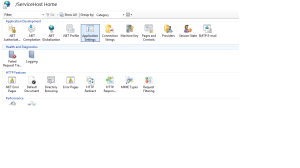This is script that can be used to create a scom discovery override using powershell.
## Usage:
## Check the overridable paramters for your discoveries first and then change the parameter you would like to set in $override.Parameter. The format of the parameter may be like
## Selector : $Config/PeriodInSeconds$. You should only add the "PeriodInSeconds" part
#$disc = Get-SCOMDiscovery -DisplayName "Windows Internet Information Services Web Applications 76-100 Discovery Rule"
## $discovery.GetOverrideableParameters()
Import-module operationsmanager
New-SCOMManagementGroupConnection -ComputerName MyRMS
$mps = Get-SCOMManagementPack |?{$_.name -match "Microsoft.Windows.InternetInformationServices.2003"}
$overridemp = Get-SCOMManagementPack -Name "IIS.Management.Pack.Discovery.Overrides"
$discoveries = Get-SCOMDiscovery -ManagementPack $mps
foreach($discovery in $discoveries)
{
if($discovery.Enabled -ne "false")
{
$override = $null
$overridemp = Get-SCOMManagementPack -Name "IIS.Management.Pack.Discovery.Overrides"
$Target= Get-SCOMClass -id $discovery.Target.Id
$overridename = $discovery.name + ".Override"
$override = New-Object Microsoft.EnterpriseManagement.Configuration.ManagementPackDiscoveryConfigurationOverride($overridemp,$overridename)
$override.Discovery = $discovery
$override.Module = $discovery.DataSource
$override.Parameter = "PeriodInSeconds"
$override.value = 86400
$override.DisplayName = $overridename
$override.Context = $Target
}
}
$overridemp.Verify() ## This may fail sometimes with a validation error on 2012 R2. So just remove this line and check if your mp imports.
$overridemp.AcceptChanges()
